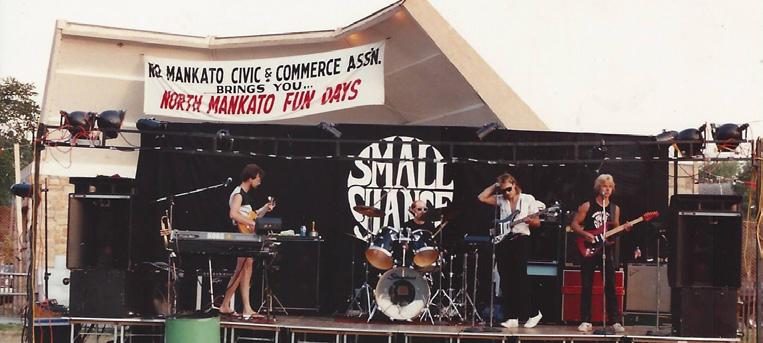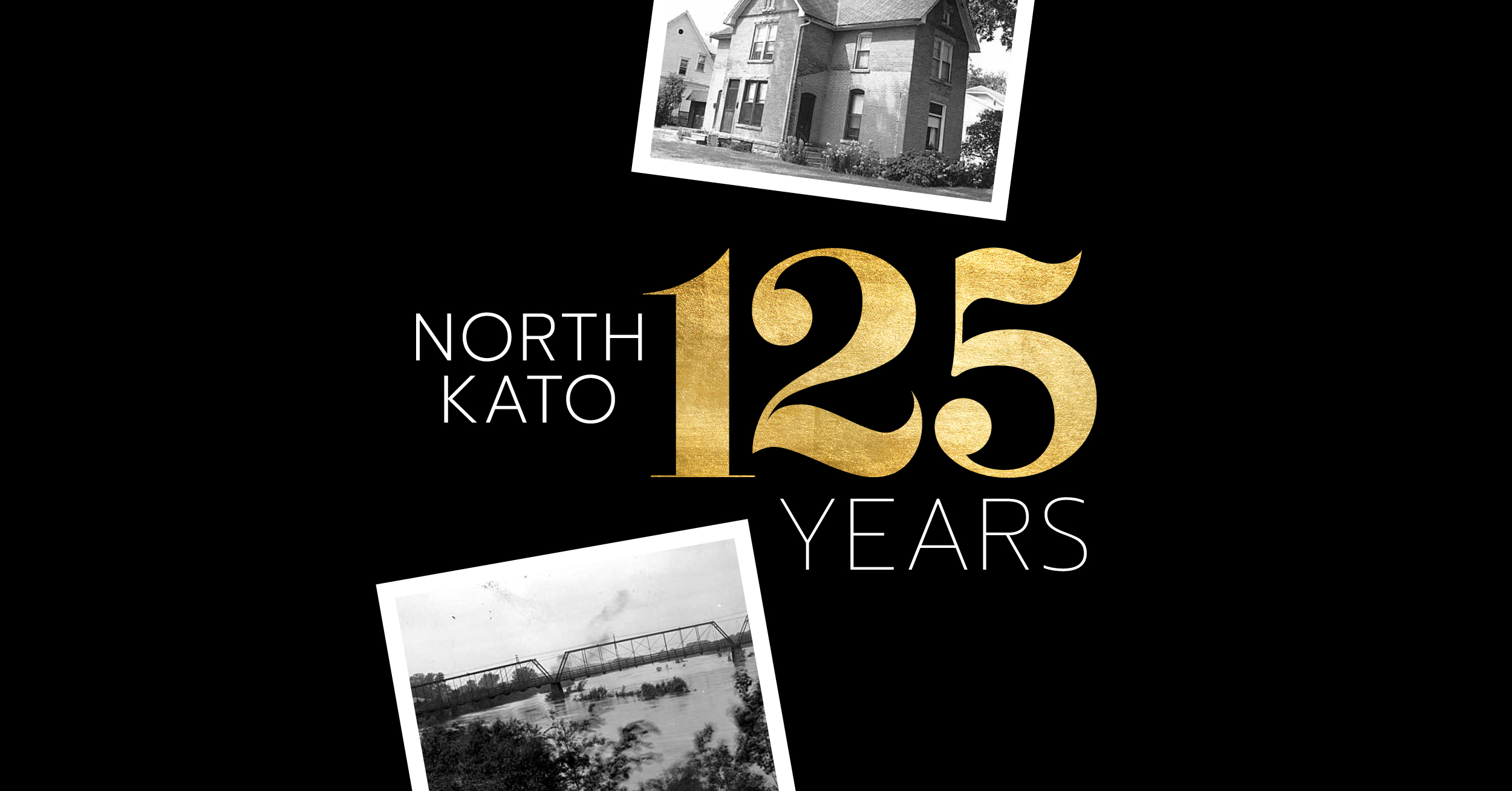
12 minute read
North Kato 125 Years
NORTH KATO 125 YEARS
BY HOLLY DODGE
“History does not belong to us; we belong to it.”
— Hans-Georg Gadamer
Nestled along the scenic banks of the Minnesota River, North Mankato has colorfully woven its way through 125 years of history, each year a thread adding to the rich tapestry of this community. From humble and hopeful beginnings in 1899 to the thriving community it is today, North Mankato’s 125th Anniversary is a testament to our residents’ resilience, innovation, and collective spirit.
The Early Years: North Mankato before 1899
“North Mankato dirt is worth money and a good investment.”
— Mankato Review, 1892
After the 1851 signing of the Treaty of Traverse de Sioux, the great bend in the Minnesota River experienced an influx of activity. Many eager immigrants navigating the snags and catches of the Minnesota River on large steamboats experienced “townsite fever” at nearly every steamboat landing.
The beautiful riverbanks and bluffs North of Mankato proper quickly inspired the speculation of a community. In 1857, Isaac Marks, Asa White, and Joseph Gunther plotted plans for what would become Belgrade Township in Nicollet County.
This early township was meager, with only two ferry boat landings used to haul loads of hay, wood, and other farm goods across the river to Mankato Markets. The ferries moved utilizing a cable and pulley attached to the opposite bank. One was located near Sibley Park, and the other near Hubbard Mills.
Through many hardships, including the Civil War and the Dakota Conflict, the fledgling town experienced increased growth and prosperity with a rise in steamboat traffic and the nearby railroad. In 1879, the governments of Belgrade Township and Mankato combined efforts to build an iron bridge connecting the communities. The 810-foot bridge near the present Veteran’s Memorial Bridge was completed in 1880.

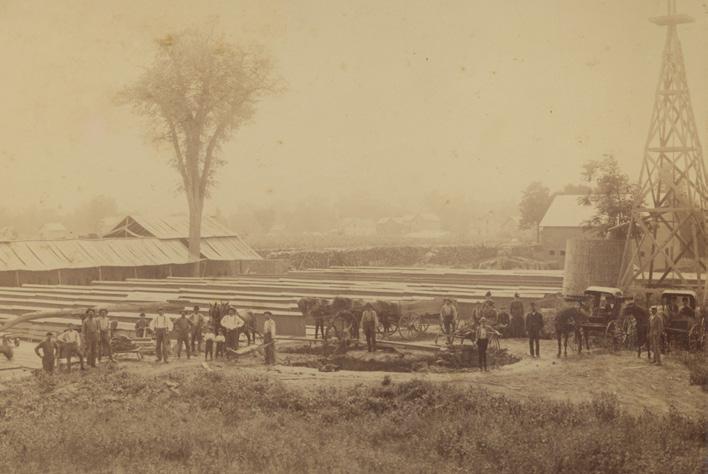
In 1886, A.L. Wheeler and O.E. Bennet introduced industry to the community with the start of a successful brickyard located at present Wheeler Park. The business was profitable into the late 19th century, which is still evident with many brick homes still proudly standing in lower North Mankato.
The Birth of a City: 1899 – 1919
“The little town on this side of the river proposes to keep right along with the procession of advancement.”
— St. Peter Tribune, 1901
The area began to see a housing and building boom. With the community quickly gaining population, citizens voted to incorporate the village, and in 1899, prominent figure and pharmacy owner Wendall Hodapp began his official duties as the first elected mayor.
The first council meeting occurred on January 10, 1899, at the home of O.E. Bennet, located at 322 Wheeler Avenue. Early on, improvements were authorized to improve streets and sidewalks, to erect power and light poles, and to grant Mankato Gas and Electric Company to provide residential services. In 1901, the council voted to protect the community by implementing a fire department.

The fire hall was soon constructed as a one-story woodframe building at the southeast corner of Belgrade Avenue and Center Street. The barn-like structure housed horsedrawn wagons and fire equipment. A back meeting room became a gathering place for volunteer firefighters, the village council, and the court. By 1910, a simple one-story wood-frame building was added to the property to house the community library and some city hall services.
With steady commercial and business growth, the People’s State Bank was established in 1912. The bank, located at the corner of Belgrade Avenue and Cross Street, is the present Spinner’s Bar and Grill. The bank helped support the development of future North Mankato interests and growth.
A significant milestone for the growth of North Mankato included the opening of the new Main Street-Belgrade Avenue bridge in 1917. The bridge fostered a renewed sense of optimism for local development. On November 11, 1918, national optimism soared as America claimed victory in World War I.
A Decade of Pride and Progress: 1920s
“I’m glad to live in the town I live in Best to get and best to give in Hip o ray, hip o ray
Old North Mankato’s up and coming Makes me feel like I’m in the running Hip o ray, hip o ray, hip o ray, hip o ray!”
— Excerpt from a spirit song written by Mrs. Robert Gosslee for the North Mankato Parent Teacher Association in 1920
By 1920, North Mankato had earned itself the nickname “Little Brooklyn” because of the multitude of North Mankato residents commuting across the Main Street bridge to Mankato, similar to Brooklyn, New York.
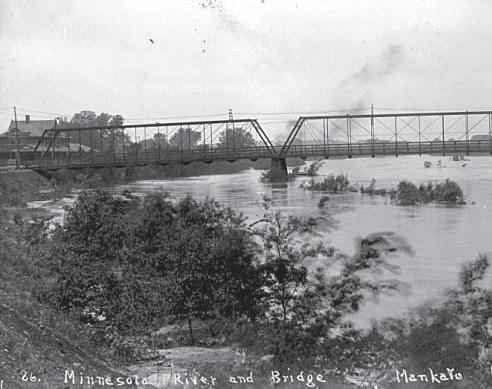
Local spirits were high, and civic improvements reigned supreme in North Mankato. Thoughtful considerations were made to improve curbs, gutters, sewers, street grading, and public safety. In 1921, North Mankato began using an electric fire siren to alert volunteer firefighters. By 1926, the Fire Department expanded into a 25-man volunteer fire department with a two-ton, six-speed fire truck.
In 1922, North Mankato officially became a fourth-class city. Mayor C.E. Ball supervised the transition and helped introduce a new and more flexible city government that prevented the possibility of annexation to Mankato.
A notable landmark also arrived in 1926. A new and stately municipal building was designed and constructed by Henry Gerlach. The new municipal building (present Brandt/Gerlach building) across from the old North Mankato School (present Bell Tower Apartments) hosted city offices, a public auditorium, and space for police and fire equipment— the public dedication in April of 1926 hosted more than 1,000 community members.
At the 120-year revitalization event of the Municipal Building in 2019, JoAnn (Neubert) Borchert, a lifelong North Mankato resident, fondly recalled a company Christmas Party as a child at the Municipal Building. She said her father, “who never danced,” was hypnotized into dancing with her mother in the large auditorium.
As the population of North Mankato increased from 15 to 30 new homesteads a year, North Mankato was not immune to the forces of nature. An unusually frigid and snowy winter brought a wave of record-breaking cold in the winter of 1928-1929, with temperatures dipping as low as -31 degrees and high snowfalls raising the Minnesota River to 18.5 feet over low level in March.
In June of 1929, North Mankato was one of several Minnesota River Valley communities afflicted with damage from a 20-minute tornado. The twister caused over $1 million dollars worth of damage within a 40-mile radius of Mankato and claimed the lives of four area residents.
A Test of Resilience: The Depression Years 1931-1940
The 1930s brought unprecedented challenges, with the Great Depression gripping the nation, but the citizens of North Mankato kept their spirits high. The community focused on amusements and activities: constructing an ice rink, hosting Trade Shows, offering adult education classes, and even hosting the Ringling Brothers Circus with a record-breaking attendance of 27,000 attendees in one day.
Upon the repeal of Prohibition in 1933 and with much local outcry, North Mankato City Council voted for the sale of liquor licenses, with the first licensed establishment being Lang & Herrley’s “Ye Tavern.” In 1935, Pinball games were also legalized locally, with a license costing $5 per month and stipulating that no one under 18 was allowed to play.
1938 also saw the beginning of the region’s first radio station, KYSM. The station became a source of information, entertainment, and community connection during the difficult Depression years. Most of the broadcasts were live in the studio and featured news programs and programs produced by Gustavus Adolphus College. The station’s 281-foot vertical transmitter was located at the top of Belgrade Hill.
Community United: War and Post-War 1940s
“The shock to the nation as well as to the people of the world cannot be explained in words. But one thing is certain. We, as a united people, will renew our determination to carry the job through and strive for lasting peace.”
— North Mankato Mayor, H.C. Wollam, following the news of President Franklin Roosevelt’s death in 1945
The attack of Pearl Harbor on December 7, 1941, had residents rallying around war efforts. Many residents enlisted to serve in the war. Like many other cities across the country, North Mankato geared up for war production and abided by quotas and rations to support essential war commodities. There were many concerns about food outages due to federal guidelines. March 21, 1943, was the last day citizens could make unrestricted butter purchases.
President Roosevelt was successfully reelected in 1944 but only served a few months into his third term before his death in April 1945. Shortly after, on September 2, 1945, Japan formally surrendered, allowing citizens to turn their attention back to domestic issues. North Mankato experienced considerable post-war building growth.

Changing Landscape: 1950s and 1960s
“When the water knocked out my basement wall, we got out. There was over 18 feet of water on the first floor. I had fish in my bathtub.”
— Phil Staley
The same river that attracted original settlers many years earlier and provided countless recreation and respite for North Mankatoans reminded everyone of its power with the great flood of 1951.
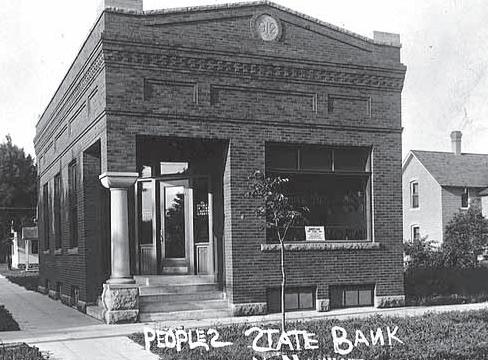
On April 2, 1951, the Minnesota River was at 6.5 feet. Due to heavy rains and thawing snow, the river was rapidly rising, and on April 7, it measured 22.8 feet. Over 350 volunteers worked tirelessly around the clock to raise the dike two inches per hour, ultimately increasing the height by 2.5 feet, but the water persisted.
All but 100 Lower North Mankato residents evacuated to higher ground, and by April 8, Belgrade Avenue, the heartline of Lower North, was under 16 inches of water. Two thousand volunteers were called off the dike due to safety concerns of a break. By April 9, the river crested at 26.2 feet, leaving most of Sherman Street under five feet of water. Residents relied on boats and canoes to navigate the watery streets.
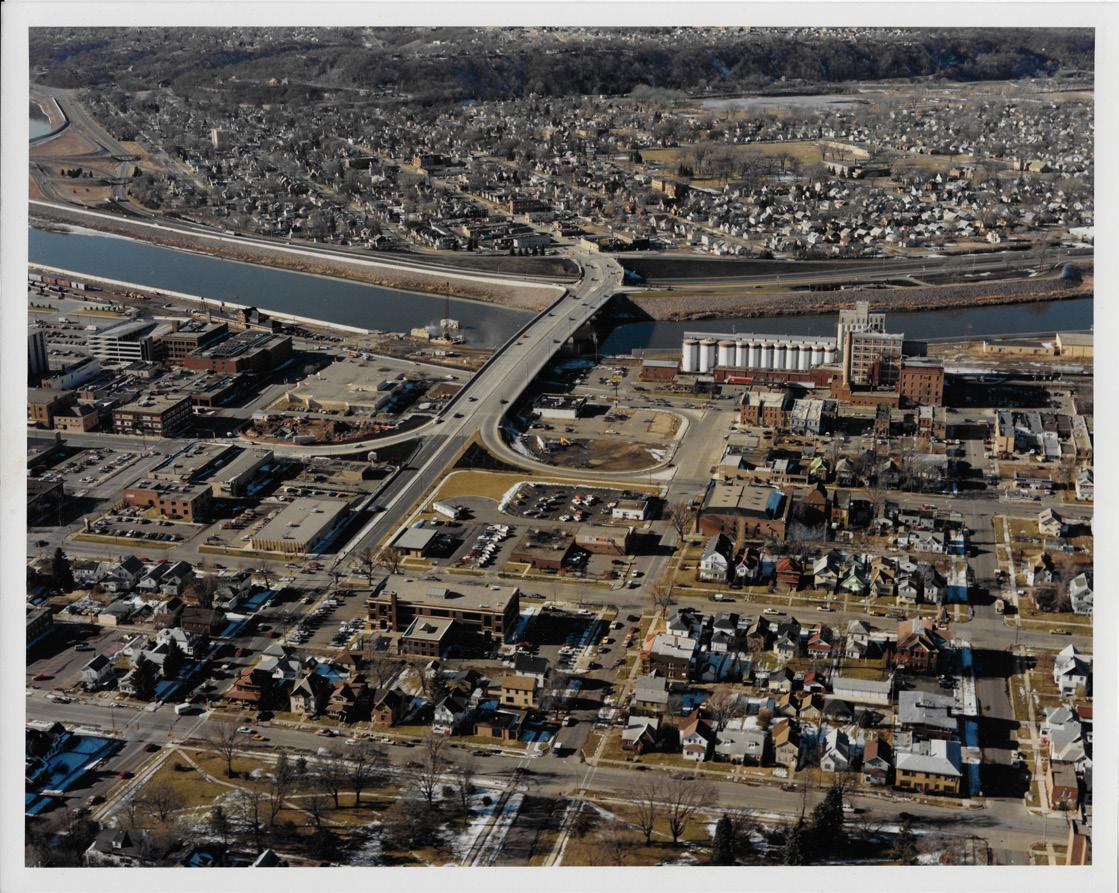
The following spring of 1952, river waters again rose to 24.62 feet, resulting in the decision to raise the dike’s height to 27 feet. With waters lapping the dike, North Mankato had a few years of reprieve until April 1965.
On April 9, North Mankato Mayor Ray Eckes evacuated the community, and the Main Street bridge was roped off. The river crested at 29.09 feet, creating hundreds of thousands of dollars of local damage.
The heroic and hardworking efforts of community members were not overlooked. In the summer of 1964, North Mankato hosted a three-day town festival with typical festival events: bingo, pony rides, games, and live entertainment. The Mankato Free Press recorded that 8,200 cups of 3.2 beer were purchased at the first annual celebration.
Following the flood of 1965, North Mankato hosted a one-day celebration titled “Operation Thank You” to show appreciation for all who helped with the dike and flood prevention. The event hosted at the 200 block of Belgrade Avenue offered free hot dogs and soft drinks to an estimated 7,500 flood workers. The summer celebration continues today, 60 years later, as North Mankato Fun Days.
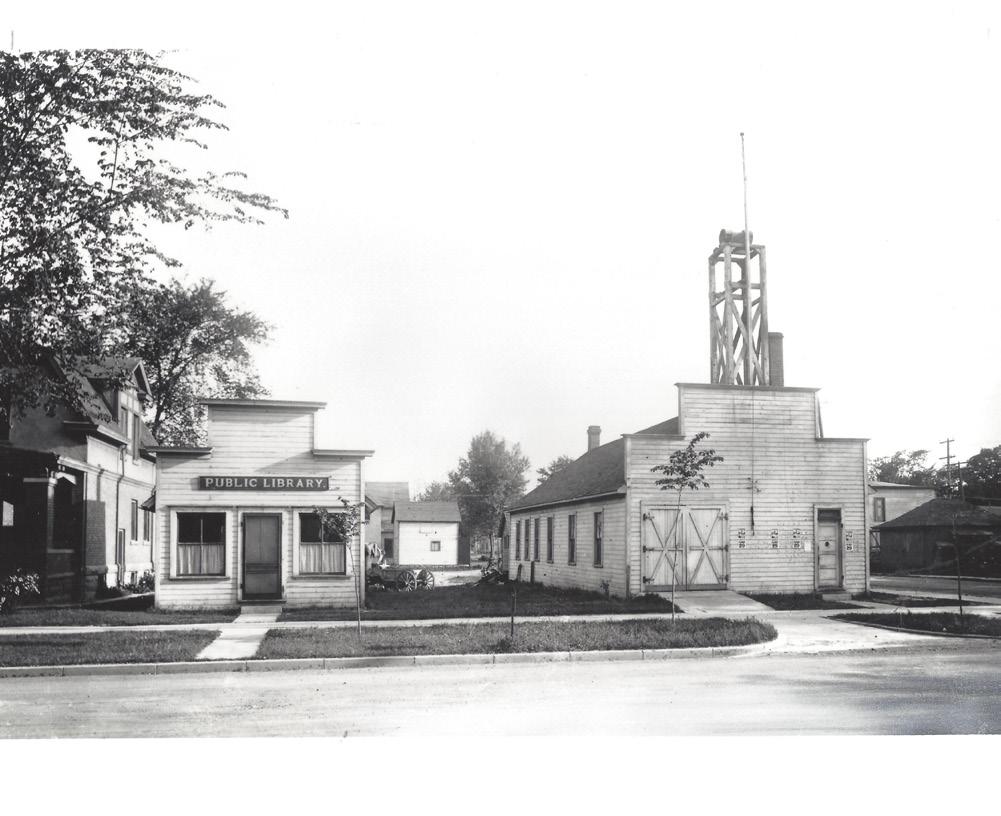
In the winter of 1969, the North Mankato City Council held its first meeting at a new municipal building at 1001 Belgrade Avenue. The facility is still used today to host city staff offices, council chambers, police quarters, and a community recreation room.
Navigating Change: The Late 20th Century
“…It’s a friendly place to live, and it’s reasonably safe. For the growth we’ve had, I’ve been very proud to say I was the mayor.”
— Mayor David Dehen
During the early 1970s, the forward-looking spirit of city officials oversaw many new park developments and a new Spring Lake Park swimming pool. With considerable population growth, a focus on industry was at the forefront.
In 1986, the old Main Street bridge was replaced by a more traffic-friendly Veterans Memorial Bridge connecting Belgrade Avenue to Mulberry Street. Industry development increased significantly, and industrial facilities soon dominated the North Mankato hilltop skyline. Taylor Corporation's various printing operations headquartered in upper North and offered many area residents work.
North Mankato resident of 50 years and member of the Small Change band, Brad Blume, fondly remembers the 70s and 80s when their band played all over North Mankato. From Ruby Lou’s in the Holiday Inn for multiple wedding parties to the well-attended Fun Days. In 1985, Small Change took to the Fun Days stage after a massive downpour that didn’t deter North Mankatoans away.
In 1990, North Mankato was awarded its own zip code of 56003. The 90s saw continued infrastructure growth, including Dakota Meadows Middle School, which was opened in 1993 after overcrowding at Hoover Elementary.
Innovation and Resilience: The 21st Century
The city’s 125th Anniversary serves as a reminder of the collective spirit that has carried North Mankato through its intricate and colorful history. Currently, with nearly 15,000 residents, the collective spirit of North Mankato continues to display that fierce independence, resiliency, unity, and hard work make this community a worthy place to live, work, and play. These enduring qualities that have shaped history continue to propel it into the future, and it displays that North Mankato is here to stay.
